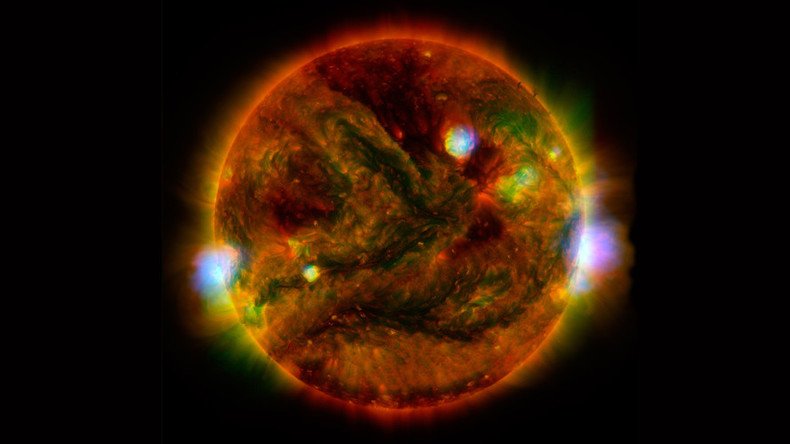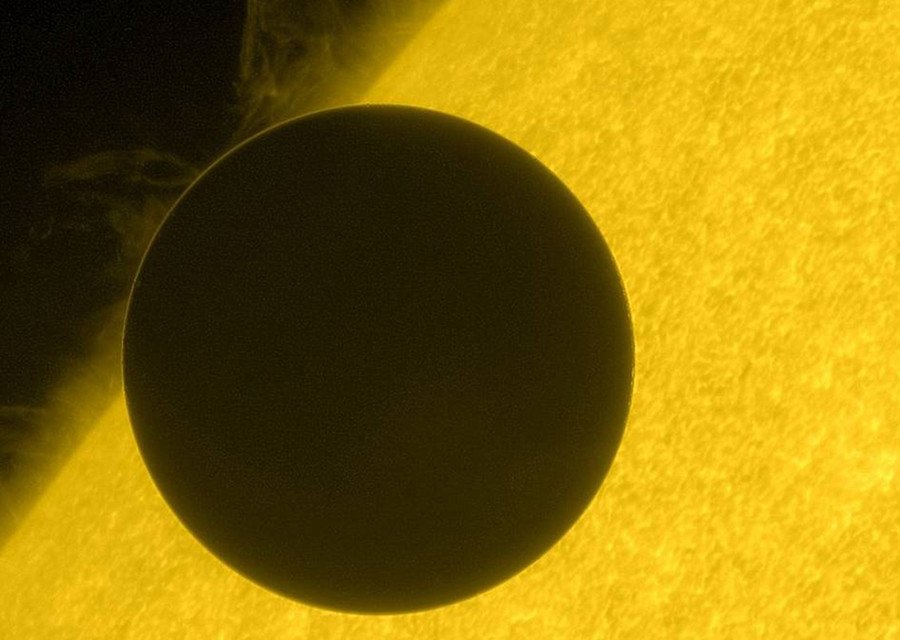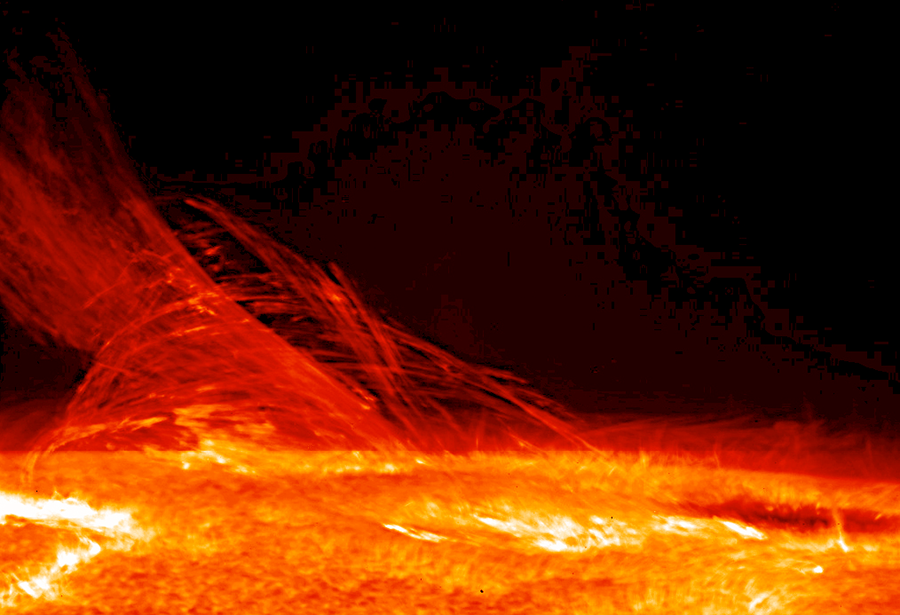10yo sun-monitoring spacecraft captures awesome images of our star (PHOTOS, VIDEO)

Truly awesome images captured by the sun-exploring spacecraft Hinode since it launched a decade ago have been released.
The Hinode Observatory has been constantly monitoring the sun since its launch in September 2006 and, with nearly a full solar cycle under it’s belt, the space agency is making time to look back at its greatest captures.
After a decade of watching the sun, Hinode spacecraft has provided some stellar insight: https://t.co/hxDW6oQKT0pic.twitter.com/Lg4FcdP1mQ
— NASA (@NASA) September 22, 2016
A Japan Aerospace Exploration Agency (JAXA) mission, Hinode is the result of a collaboration with NASA and the ESA to deliver fascinating never-before-seen observations of one of the solar system’s primary participants through high-resolution images.
When Venus stopped by

In 2012, Hinode’s Solar Optical Telescope caught Venus, and it’s thin glowing atmosphere, as it made it’s way past the sun.
Total eclipse
Hinode tracked the moon’s movements in 2012 during its annual eclipse of the sun.
READ MORE: NASA space telescope captures black holes ‘burping’ after eating up stars
Burning rings of fire
Hinode’s X-ray telescope recorded active areas of the sun’s magnetic field near its equator over a two-month period in 2013. The images were captured during the star’s “maximum activity phase” of its 11-year cycle.
Solar explosion
Hinode’s x-ray telescope managed to capture an awesome solar explosion in 2014 which was ignited by unstable magnetic fields on the sun’s surface.
READ MORE: Discovery of three giant planets could help find sustainable worlds
Dancing chromesphere

The spacecraft took its first picture of the sun on October 28, 2006 and, by the beginning of 2007, it had already delivered a spectacular view of the the sun’s ‘chromosphere’ - the thin atmospheric layer pulled and stretched between the sun’s surface and outer atmosphere.












